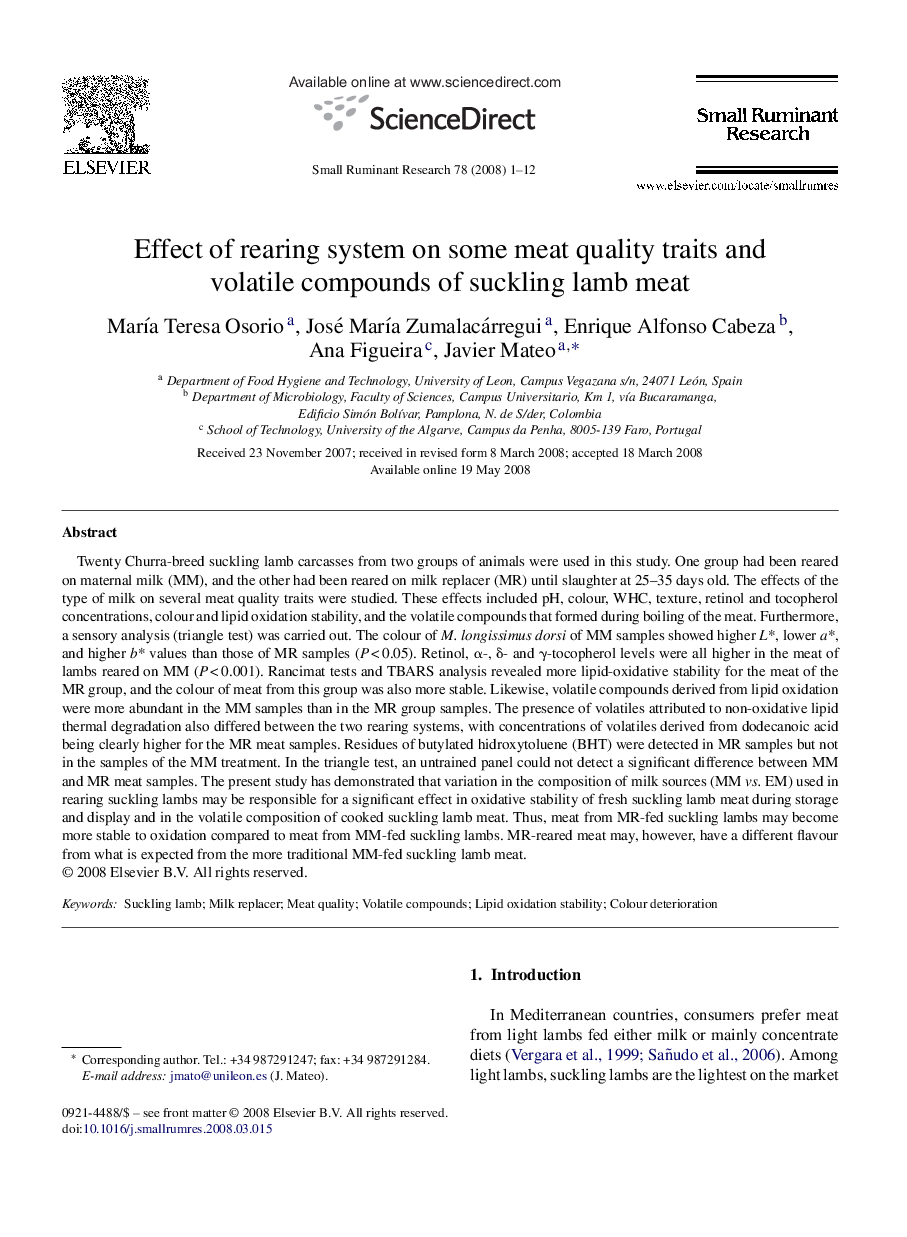| Article ID | Journal | Published Year | Pages | File Type |
|---|---|---|---|---|
| 2457873 | Small Ruminant Research | 2008 | 12 Pages |
Twenty Churra-breed suckling lamb carcasses from two groups of animals were used in this study. One group had been reared on maternal milk (MM), and the other had been reared on milk replacer (MR) until slaughter at 25–35 days old. The effects of the type of milk on several meat quality traits were studied. These effects included pH, colour, WHC, texture, retinol and tocopherol concentrations, colour and lipid oxidation stability, and the volatile compounds that formed during boiling of the meat. Furthermore, a sensory analysis (triangle test) was carried out. The colour of M. longissimus dorsi of MM samples showed higher L*, lower a*, and higher b* values than those of MR samples (P < 0.05). Retinol, α-, δ- and γ-tocopherol levels were all higher in the meat of lambs reared on MM (P < 0.001). Rancimat tests and TBARS analysis revealed more lipid-oxidative stability for the meat of the MR group, and the colour of meat from this group was also more stable. Likewise, volatile compounds derived from lipid oxidation were more abundant in the MM samples than in the MR group samples. The presence of volatiles attributed to non-oxidative lipid thermal degradation also differed between the two rearing systems, with concentrations of volatiles derived from dodecanoic acid being clearly higher for the MR meat samples. Residues of butylated hidroxytoluene (BHT) were detected in MR samples but not in the samples of the MM treatment. In the triangle test, an untrained panel could not detect a significant difference between MM and MR meat samples. The present study has demonstrated that variation in the composition of milk sources (MM vs. EM) used in rearing suckling lambs may be responsible for a significant effect in oxidative stability of fresh suckling lamb meat during storage and display and in the volatile composition of cooked suckling lamb meat. Thus, meat from MR-fed suckling lambs may become more stable to oxidation compared to meat from MM-fed suckling lambs. MR-reared meat may, however, have a different flavour from what is expected from the more traditional MM-fed suckling lamb meat.
